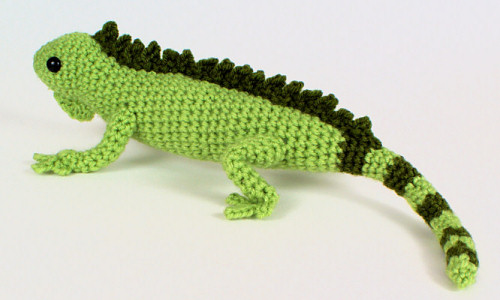
If you saw my chameleon photoblog the other day, you’ll know I have lizards on the brain. I’ve already designed a gecko and a chameleon though, so I needed a different type of lizard to complete my lizard crochet pattern trilogy. An iguana seemed like the obvious choice, with lots of fun details to include, […]






















